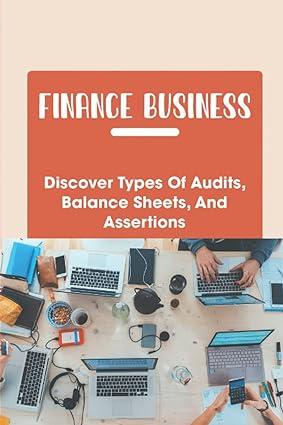Question
Example 5-11 To illustrate the tax saving that may be realized as a result of making voluntary contributions, consider the following case of Krane Company,
Example 5-11
To illustrate the tax saving that may be realized as a result of making voluntary contributions, consider the following case of Krane Company, which is subject to the unemployment compensation law of a state that uses the reserve-ratio formula to determine experience ratings. The following contribution rate schedule applies for 2021:
| Reserve Ratio | Rate |
| 0% to less than 1% | 6.2% |
| 1% to less than 1.4% | 5.6% |
| 1.4% to less than 1.8% | 5.0% |
| 1.8% to less than 2.2% | 4.4% |
| 2.2% to less than 2.6% | 3.8% |
| 2.6% to less than 3.0% | 3.2% |
| 3.0% and over | 2.6% |
For the three 12-month periods ending on June 30, 2020, the company had an average annual taxable payroll of $330,000. This is the base that the state uses as the average payroll. As of June 30, 2020, the credits to the employer's account exceeded the benefits paid by $6,800. Thus, the 2020 reserve ratio is 2.06 percent ($6,800 $330,000), which would result in the assignment of a 4.4 percent tax rate, as shown in the preceding table. If the employer's 2021 total taxable payroll were $390,000, the SUTA contribution would amount to $17,160.
If Krane Company makes a voluntary contribution into the state fund within the time period specified by the state law, the tax for 2021 will be less. For example, if the company contributes $460, the reserve ratio will be 2.2 percent ($7,260 $330,000). As a result, the tax rate will be reduced to 3.8 percent, with the following savings realized in 2021:
| Tax payment with no voluntary contribution (4.4% $390,000) | $17,160 | ||
| Tax payment with voluntary contribution | $460 | ||
| Reserve ratio (3.8% $390,000) | 14,820 | 15,280 | |
| Tax savings | $ 1,880 |
As of June 30, 2019 (the computation date for the 2020 tax rate), Sanchez Company had a negative balance of $1,050 in its unemployment reserve account in State A. The company's average payroll over the last three 12-month periods amounted to $520,000. The unemployment compensation law of State A provides that the tax rate of an employer who has a negative balance on the computation date shall be 7.2% during the following calendar year.
Using the tax rate schedule presented below, compute the following:
| Reserve Ratio | Contribution Rate |
| 0.0% or more, but less than 1.0% | 6.7% |
| 1.0% or more, but less than 1.2% | 6.4% |
| 1.2% or more, but less than 1.4% | 6.1% |
| 1.4% or more, but less than 1.6% | 5.8% |
| 1.6% or more, but less than 1.8% | 5.5% |
| 1.8% or more, but less than 2.0% | 5.2% |
| 2.0% or more, but less than 2.2% | 4.9% |
| 2.2% or more, but less than 2.4% | 4.6% |
| 2.4% or more, but less than 2.6% | 4.3% |
| 2.6% or more, but less than 2.8% | 4.0% |
| 2.8% or more, but less than 3.0% | 3.7% |
| 3.0% or more, but less than 3.2% | 3.4% |
| 3.2% or more | 3.1% |
a. The smallest voluntary contribution that Sanchez Company should make in order to effect a change in its tax rate. $fill in the blank 1
b. The amount of the tax savings as a result of the voluntary contribution if Sanchez Company's taxable payroll for 2020 is $650,000.
Step by Step Solution
There are 3 Steps involved in it
Step: 1

Get Instant Access to Expert-Tailored Solutions
See step-by-step solutions with expert insights and AI powered tools for academic success
Step: 2

Step: 3

Ace Your Homework with AI
Get the answers you need in no time with our AI-driven, step-by-step assistance
Get Started


